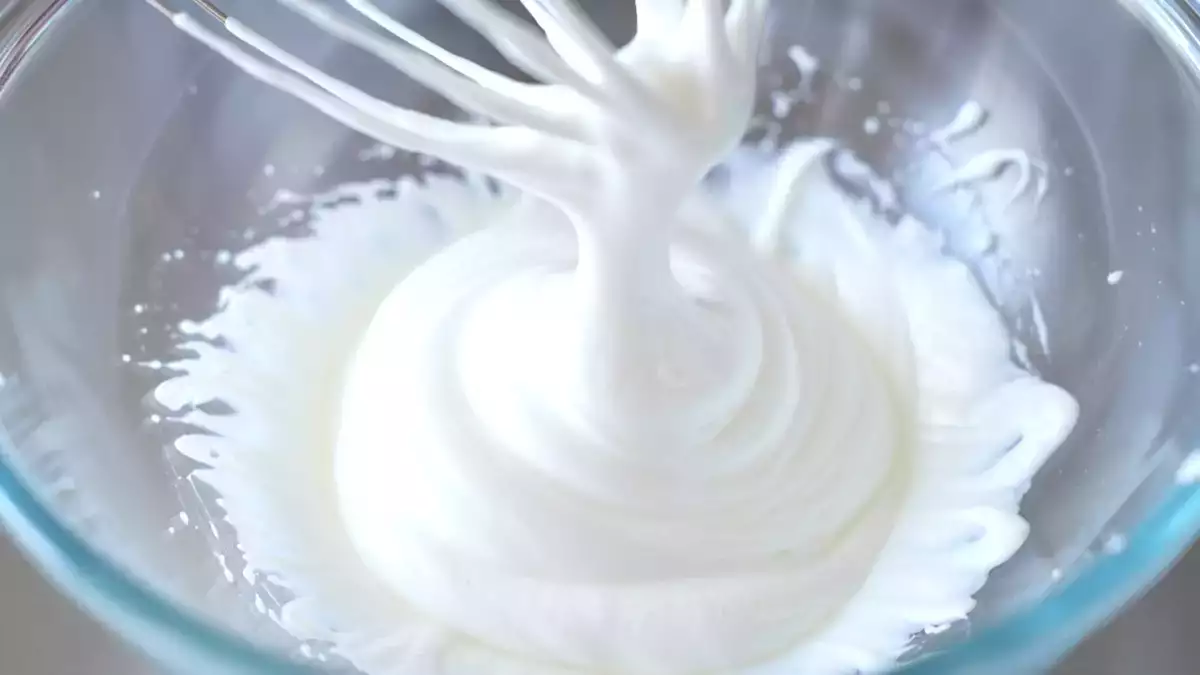Less fresh eggs? Here's why they're perfect for whipping!

Did you know that slightly old eggs whip better than fresh eggs? It sounds like a paradox, but it is a fundamental scientific truth in pastry making. As the days pass, the structure of the egg white changes, becoming better at incorporating air. In this article we find out why less-fresh eggs make meringues, soufflés, and whipped cakes more stable, and what techniques to use to get a firm, perfect snow every time.
What happens to the egg white with time?
Over time, the properties of egg white change and improve mountability:
Increased pH
Immediately after laying, egg white has a pH of about 7.6. After a few days, the value rises to 9-9.5, making the proteins more soluble and elastic, thus more prone to whipping.
Breaking of protein bonds
As proteins age, they relax and become more likely to trap air, facilitating the formation of stable foam.
Decreased surface tension
Egg white liquid loses viscosity, allowing more efficient air incorporation and lighter structure.
Weakening of the chalaza membrane
The chalaza, which holds the yolk in the center of the egg, weakens over time. This makes it easier to separate egg white and yolk, reducing the risk of contamination and promoting perfect whipping.
Advantages of less fresh eggs in whipping egg whites
Using eggs that have not just been laid, but are slightly less fresh, offers several benefits when you want to achieve perfect whipped egg whites:
1. Higher final volume
The formation of air bubbles is easier and more stable. You get a higher, lighter, airy foam, ideal for fluffy desserts such as meringues and angel cakes.
2. Faster whipping times
Lightly aged egg whites whip faster, allowing you to reach a firm consistency in less time and with less risk of over-whipping.
3. More stable texture in baking
A finer, more even foam ensures better results during baking: cakes hold their shape, meringues stay crisp on the outside and soft on the inside, soufflés do not collapse.
4. Reduced risk of coarse-grained foam
The less viscous egg white forms smaller, more uniform bubbles, resulting in a velvety, firm texture that is perfect for mousses, parfaits, and air-rise cakes.
How to whip egg whites to perfect stiffness: techniques and useful tips
Whipping egg whites to perfection is an art that requires attention and a few tricks of the trade. In addition to the freshness of the eggs, other crucial factors come into play to achieve a firm, stable and airy snow. Learn the basic steps to make sure you don't get it wrong.
What to do to whip egg whites to stiff peaks:
1. Use room temperature eggs
Eggs cold from the fridge whip with more difficulty: let them rest at least 30 minutes before using them to get a more voluminous and stable foam.
2. Clean the bowl and whisk well
Any residual grease, including even a trace of yolk, prevents whipping. Use glass or steel bowls and make sure they are perfectly degreased.
3. Add lemon or cream of tartar
A few drops of lemon juice or a pinch of cream of tartar helps stabilize the egg white proteins, making the snow stronger and less likely to come apart.
4. Start whipping at low speed
Start with the whisk at low speed to break up the egg white structure, then gradually increase to get smaller, more compact air bubbles.
5. Recognize the stages of whipping
Observe the evolution of egg whites: from initial foam, to soft whites (folding tips), to firm whites (straight, stable tips). Break at the right time according to intended use.
Conclusion: the invisible trick that changes everything
Knowing that slightly aged eggs whip better is not just an enthusiast's curiosity. It is that detail that turns a simple preparation into a true pastry masterpiece.
A perfect meringue, an ultra-light soufflé or a frothy cream start right here: the age of the egg white. Because in cooking, and especially in pastry making, it is the little secrets that make the big difference.
 Daniele Mainieri
Daniele Mainieri
Comments